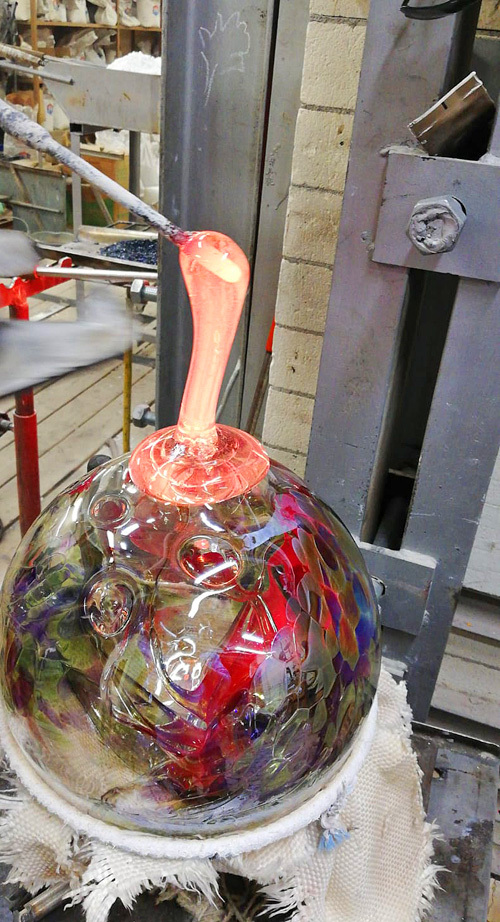Kugels are commonly referred to as the traditional choice for holiday and year round decoration in central Europe. In the United States, Kugels are referred to as Friendship Balls, however since are glass balls originate from Europe we refer to them as Kugels. Each kugel is hand blown glass, and completely unique. Kugels can be displayed from interior arches, ceiling fixtures, curtain rods, Christmas Trees, holiday garland, hand railings, or wherever you like.
History
Holiday trees in 1840 were adorned with apples, gilded and natural fruits and nuts, cookies, popcorn and cranberries, as well as homemade paper items, candles, cornucopias, and presents. It was during this decade that the first commercially produced Christmas decorations appeared. In 1848, the first glass ornament, a kugel, appeared in Germany. The kugel was a large hollow ball ranging in size from 1 inch to 18 inches. Smaller ones were used for tree decorations. The blown, molded, figural glass ornaments that we are familiar with today evolved from the tradition of blowing kugels. These ornaments were not sold in America until 1880.
Kugel is a German word that means ball and can be used to describe any type of ball-like object. Collectors used this term to describe any early thick glass ornament with a decorative cap. Early Kugels were too heavy to hang on tree branches; instead they were suspended from the ceiling. Soon after their invention, the Germans decided small Kugels should adorn tree boughs. Shapes such as grapes, berry clusters, apples and pears
became popular. F. W. Woolworth is given credit for bringing Kugels to America in the 1880s. His initial investment of $25 turned into sales of at least $25 million worth of Kugels over the next several years.
Kugels Today
European Art glass balls for holiday decoration are still commonly referred to in Austria and Germany as Kugels. Kugels range in shape and styles, according to the artist that made them and the season they are displayed. It is quite common to display egg shaped kugels at Easter and Heart shapes at Valentines day. Quality kugels are hand blown or mouth blown art glass. Most are blown into a apple wood mold to retain shape and consistency. Some artists free blow their kugel designs, thus ending up in an irregular shape. Air bubbles are common, and expected by the collector.
In America these glass balls are marketed in many ways. Witch balls, spirit balls, spirit catchers, friendship balls, gazing balls, wishing balls, and so on. Each having a little bit of home grown folklore attached to make the item unique or extra special.
In Your Garden or Pond
Our blown glass balls are sealed air tight and therefore serve as beautiful accents floating on the surface of any water garden. They have the added advantage of offering a hook, which can be used to drop a line anchoring the ball. Without an anchor, free floating pond balls will cluster in one corner of the pond, but if weighted, our balls stay aesthetically placed. We recommend the use of non-lead weights because lead could poison pond fish.
Floating glass balls may even protect your pond fish from predators. Folklore suggests that raccoons are frightened by the shiny surface of the balls and will stop poaching your pond pets.
Add other splashes of color to your garden by hanging our blown glass balls from trees or on garden hooks. They will withstand most weather conditions, as long as they can't swing and bump into a hard surface

